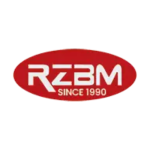Introduction
Choosing the correct butterfly valve for your project is an important choice that affects performance, efficiency, and long-term dependability. Crane has long been a trusted brand in valve production, with a comprehensive selection of butterfly valves built to fulfill a variety of industrial demands. In this article, we'll walk you through the essential elements so you can successfully navigate the decision process.
Understanding Butterfly Valves
Butterfly valves are quarter-turn valves that regulate flow by rotating the disc through which the fluid travels. They are noted for their small design, rapid operation, and little pressure drop. Crane butterfly valves are available in a variety of materials, including stainless steel, carbon steel, and ductile iron, each suitable to a specific application based on fluid compatibility, temperature, and pressure.
Step-by-step Selection Guide
1. Define Your Application Requirements:
- Fluid kind and Characteristics: Determine the kind of fluid (liquid or gas), its corrosiveness, viscosity, and solid content.
- Operational Conditions: Determine the temperature range, pressure ratings, flow rate, and any unique environmental conditions (such as outdoor or chemical exposure).
- System Compatibility: Consider how the valve will fit into your current pipe system, including flange standards, valve size, and end connections.
2. Evaluate the Valve Design and Construction:
- Body Type: Depending on installation needs and pipe specifications, select from wafer, lug, or double-flanged designs.
- Disc Materials and Design: Determine the disc material (e.g., stainless steel, ductile iron) and design (e.g., high-performance, resilient-seated) depending on flow parameters and operating circumstances.
- Seat Material: Consider the seat material (e.g., EPDM, PTFE) for fluid compatibility and ability to produce a dependable seal throughout the valve's life.
3. Consider operational features:
- Actuation Type: Determine if manual operation or automated actuation (electric, pneumatic, hydraulic) is preferred depending on operating needs, accessibility, and control requirements.
- Access and Maintenance: Evaluate the ease of maintenance and repair access, taking into account aspects such as valve size, position, and spare component availability.
4. Evaluate compliance and standards:
- Ensure that the valve you choose meets industry standards (e.g., API, ANSI, ASTM) and certifications (e.g., ISO 9001) that are important to your project's regulatory and operational safety.
Consult with Crane Experts
Choosing the proper Crane butterfly valve needs more than just technical parameters; you must also consider how the valve will function in your specific application. Crane's team of professionals can offer useful advice and support throughout the decision process. They can assist you in determining your needs, recommending appropriate valve designs, and ensuring compatibility with your project objectives.
Conclusion
Choosing Crane butterfly valves requires a thorough approach to assessing your project's requirements, reviewing technical specifications, and seeking professional guidance. By taking into account fluid parameters, operating circumstances, valve design, and compliance regulations, you can confidently select a Crane butterfly valve that provides the best performance, efficiency, and dependability for your industrial applications.
Contact our staff now if you need additional assistance or want to learn more about Crane's butterfly valves. We are here to help you locate the ideal valve solution for your project's success.






Comments